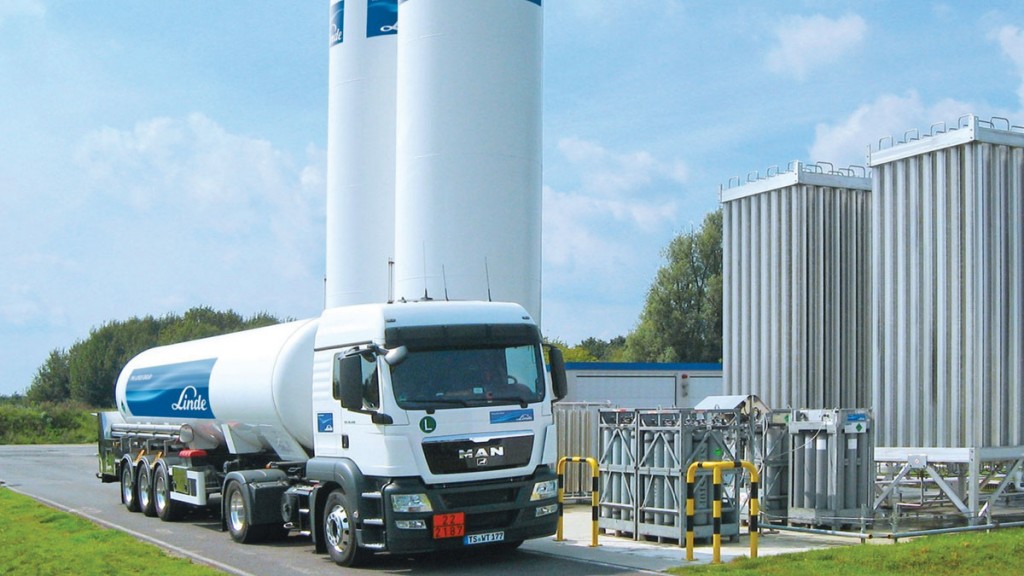
Industrial gas giants Linde and Praxair are set for a $60bn merger – but regulators won’t give them an easy ride.
Industrial gases “mix easily”, says John Foley on BreakingViews.com. So too do the companies that make them. German gas giant Linde, which sells nitrogen, argon and carbon dioxide to buyers who range from soda bottlers to welders, is “in preliminary discussions about a possible merger” with its smaller American rival Praxair, the two firms revealed. A deal could be done quickly, “in the coming weeks”, according to Bloomberg.com. Shares in Linde jumped 10% as the news emerged, while Praxair’s rose by 5%.
The talks are “yet to lead to any concrete result or agreement”, the companies said, but they are likely to push hard for a deal to go through. Lacklustre levels of global growth have forced players in the industrial gas niche to consolidate quickly, shutting down spare capacity, raising prices and forcing down costs. French group Air Liquide recently bought Airgas, its American rival, for more than $13bn. The deal has turned Air Liquide into the giant of the sector, with a market share of 28%, accelerating talk of a mega-merger between Linde and Praxair.
There’s a quirk of history to this proposal, notes Eyk Henning in The Wall Street Journal. Praxair was founded as Linde’s American arm in 1907, but grew so quickly that the two firms split in 1917. If their boards can now hammer out which executives will take the top jobs, they look set to come together again.
Combined, the two firms would be worth over $60bn, with 90,000 employees and sales of $30bn, or 40% of the market – easily overtaking Air Liquide. The deal would “create a clear number one in the gases sector”, says Peter Spengler, an analyst at DZ Bank. Cost savings may not sound that compelling at first, notes Foley. Air Liquide has estimated that synergies from its own deal will be small, at roughly 1.5% of total sales.
However, a tie-up between Linde and Praxair might be able to do better. “In any case, searching too closely for financial logic may miss the point.” This proposal is mostly driven by the strategic desire “to soak up a competitor and reduce excess capacity”. So if the deal goes ahead, shareholders might do well enough, but with even fewer suppliers to choose between, customers might start getting higher bills.
Hence competition watchdogs could still block the deal. The number of global players in the industrial gas market would shrink from four to just three. Linde and Praxair both sell gas in overlapping markets (although in the US, where competition concerns are hottest, Linde is primarily focused on hospitals, while Praxair supplies steel plants). Given the scale of the new group, the regulatory obstacles will be “extremely high”, says Thomas Wrigglesworth, an analyst at Citigroup.
Bids & deals: Pfizer gambles on a blockbuster
On Monday, drug company Pfizer announced that it will pay $14bn for biotech firm Medivation. The offer of $81.50 per share represents a 21% premium to Medivation’s undisturbed price, and is nearly triple the level that the shares traded at in February. The main motivation for the acquisition was Xtandi, a blockbuster prostate-cancer drug, which is a “rare gem”, says Robert Cyran on BreakingViews.com: it had worldwide sales of $595m in the second quarter of this year.
Still, even allowing for other drugs in the pipeline, Pfizer is paying more than 11 times Medivation’s forecast sales for 2017. Either it knows something that others don’t, or it has “once again paid more than it should”.
The price is definitely steep, agrees the Financial Times’ Lex column. Medivation’s shares had already been pushed up by a $10bn approach from French rival Sanofi in July. Still, Pfizer’s broad strategy makes sense: cancer treatment is a huge and growing market.
Building up “a suite of oncological breakthroughs is one of the few ways such a large company might counter its falling revenues”. After attempting two failed acquisitions (AstraZeneca and Allergan) that would have let Pfizer redomicile abroad for tax reasons and toying with the idea of splitting into one firm for mature drugs and another for new prospects, at least “this deal marks a welcome return of emphasis to the business of drug discovery”.